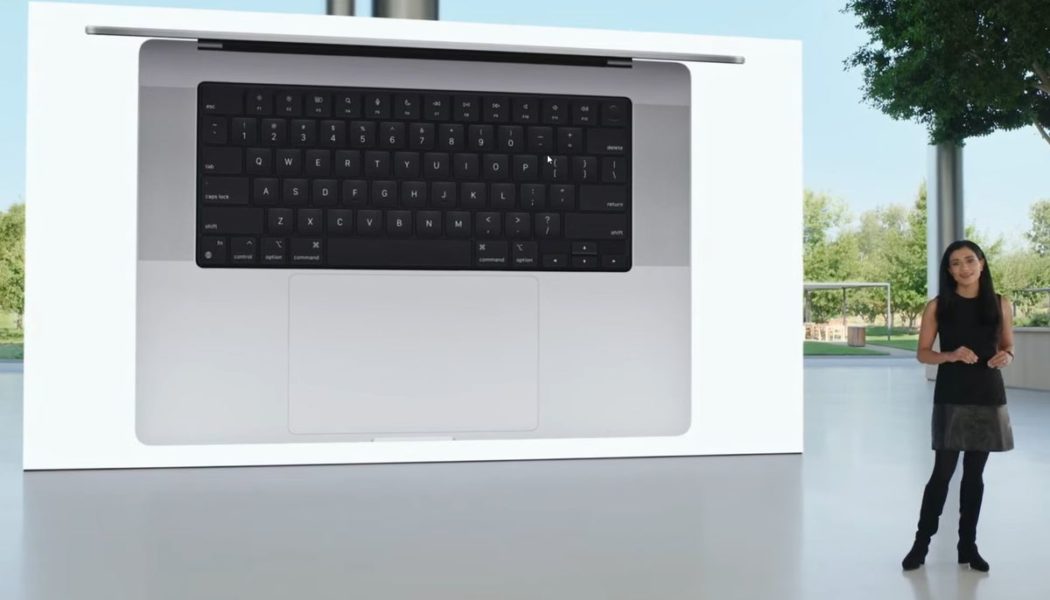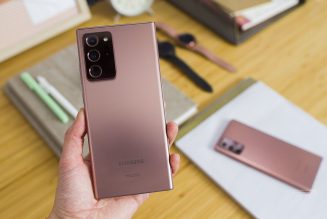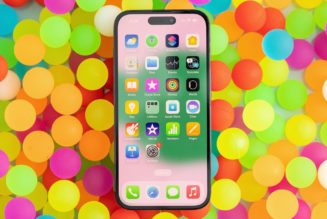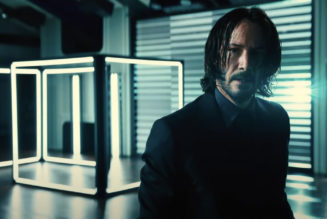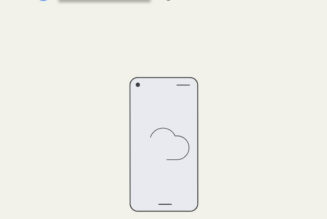There’s plenty to be excited about when it comes to Apple’s new 14- and 16-inch MacBook Pros. As well as souped-up Pro and Max versions of the already capable M1 chip that Apple debuted last year, they also include numerous quality of life improvements like the return of MagSafe, a row of function keys rather than an OLED Touch Bar, and of course, a full selection of ports that won’t have users reaching for a dongle if they just want to import some photos from an SD card.
In fact, Apple was so enthusiastic about these “new” features, you’d be forgiven for forgetting that it was the one that killed most of them off in 2016.
“Users value the full-height function row on the standalone Magic Keyboard, and we’ve brought it to the MacBook Pro,” Apple’s Shruti Haldea said as she explained the decision to ditch the Touch Bar, the touchscreen OLED strip Apple so enthusiastically introduced five years ago. “Having a wide range of ports can make life a lot easier for pros,” Haldea continued, concisely summarizing what professional users have been saying for roughly half a decade.
:no_upscale()/cdn.vox-cdn.com/uploads/chorus_asset/file/22939123/msedge_gtjccFwnty.jpg)
MagSafe, the convenient magnetic charging connector, is also returning to laptops after Apple stopped including it on its laptops in 2016.
Although it’s obviously backtracking, I think Apple is absolutely making the right call with all three of these changes. For the vast majority of users, a proper function row is far more useful than a software-based Touch Bar that failed to catch on with developers; a bevy of easily accessible ports make life easier for Pros and average Joes alike, and MagSafe is faster to connect than a USB-C cable and can prevent your laptop from being damaged when someone trips on the power cord.
But it’s hard to ignore the broader context of these improvements, which is that they effectively bring the company’s 2021 MacBook Pros back in line with the features they were already offering from 2012 to early 2016. Arguably, the primary reason these new MacBooks are being greeted with overwhelming enthusiasm now is that Apple made the wrong bet on where laptop design was headed back then.
The MacBook’s transition to USB-C arguably started with the 2015 13-inch MacBook, which included just two ports: one USB-C port to handle charging, display output, and connecting of any and all accessories and one 3.5mm headphone jack. But it was with its 2016 refresh of the MacBook Pro that Apple’s commitment to an exclusively USB-C laptop future became truly apparent. Rather than the collection of Thunderbolt, USB Type-A, HDMI, and SD card ports that previous models had included, the 2016 MacBook Pro lineup included a choice of either two or four USB Type-C / Thunderbolt ports, alongside a headphone jack. The dongle era had begun.
:no_upscale()/cdn.vox-cdn.com/uploads/chorus_asset/file/7390289/vpavic_161031_1256_0096.0.jpg)
Apple was one of the earliest adopters of what was, at the time, a very new connector. And going all-in on USB-C was basically unheard of. At the time, USB Type-A was still dominant on laptops and desktops, while Android manufacturers like Samsung were only just starting to switch away from Micro USB in their flagship phones.
Most people know what happened next: owners were forced to invest in adapters for all their old peripherals. Their laptop itself may have gotten slightly slimmer and lighter, but for pro use on the go, any space or weight saved in a backpack or briefcase was tempered by the added bulk and complexity of the extra accessories you needed.
We all know what ended up happening, but I think an interesting question to ask is what Apple thought was going to happen after it transitioned wholesale to USB-C. For what it’s worth, the company seemed, at the time, to have been genuinely caught off guard by the anger from users having to buy endless adaptors to connect basic accessories and, shortly after the release of its 2016 MacBook Pros, cut prices across swathes of its USB-C adapter lineup to help users “transition” to the new standard.
To me, this suggests Apple thought #DongleLife was going to be a temporary transitional phase rather than the new normal it eventually became. For an example of the kinds of accessories it thought would become commonplace in the future, take a look at the 5K display from LG it announced onstage at the same event, which it said was designed to pair with the new MacBook Pro. The display used a single Thunderbolt 3 cable for video, power, and data and also acted as a USB hub, thanks to a trio of additional USB-C ports.
:no_upscale()/cdn.vox-cdn.com/uploads/chorus_asset/file/22938876/HKN62_AV5.0.jpg)
Had monitors like these quickly become commonplace, we would have ended up with a future where users could dispense with many of these bulky dongles and adaptors and have the convenience of plugging into a static desk setup with just a single cable. But while some monitors did, what generally happened was that monitors continued to ship with a mix of HDMI and DisplayPort connectors, and users were forced to use adapters whenever they wanted to connect. Not to mention, plenty of people happily use the same monitor for far longer than the laptops they plug into them, particularly when they’re secondary displays.
Apple isn’t the only company to have made a bet on USB-C that didn’t quite pay off. In 2018, a consortium of companies that included AMD, Nvidia, Oculus, Valve, and Microsoft announced VirtualLink, a USB-C connection standard for VR headsets that could allow them to be powered and broadcast data over a single cable. But although the USB-C port appeared on Nvidia’s 20-series graphics cards, the standard was beset by silly dongles and adaptors (sound familiar?) and had been dropped by the time the 30-series rolled around.
It’s easy to see Apple ditching ports as a cynical cash grab in an attempt to drive sales of its own dongles and USB-C accessories. But a more generous reading is that Apple got its bet on the future wrong. It thought it could outsource a laptop’s ports to desk-based accessories like monitors and docks to make its laptops slimmer and more compact. But that ecosystem never seems to have taken off or become ubiquitous, and what happened instead was that people were forced to carry around endless adapters for simple tasks.
I have a couple of theories why Apple’s vision never became a reality. One is Macs just don’t have the market share to force a change like this across the whole industry, so manufacturers of monitors and peripherals were forced to stick with older standards from Windows machines for their most mainstream devices. Another is the confusing mess of standards supported by USB-C cables and accessories. Between Thunderbolt and USB’s smorgasbord of different versions, it can be difficult to know if a cable is even capable of making the most out of your device’s charging and data transferring capabilities, or — particularly early on — whether it’s going to fry its internals. It’s far from the easy plug-and-play future Apple seems to have had its sights on.
Or, maybe people are more attached to their older PC accessories than Apple anticipated, particularly when it comes to expensive professional equipment.
It’s interesting, in retrospect, to compare Apple’s decision to switch wholesale to USB-C on the MacBook with its decision to remove the headphone jack from the iPhone 7. This was another decision that generated an equal amount of jokes about adaptors and dongles at the time and raised similar suspicions that the move was a cash grab to help the company sell more Bluetooth headphones. But, five years later, Apple’s decision appears to have been vindicated, with its competitors following suit. There’s now a thriving ecosystem of third-party wireless headphones, and I couldn’t tell you the last time I saw someone using one of Apple’s Lightning to 3.5mm adaptors (though, with wired headphones reportedly making a retro-styled comeback, that could change soon).
Whether that’s because Apple is more dominant when it comes to smartphones or just because the benefits of wireless audio were more obvious to people than USB-C accessories, people seem to have been far more ready to roll with Apple’s annoying headphone jack decision. There’s a valid debate to be had about whether Apple kicked off a trend towards wireless audio or whether its move just turbocharged one that was already taking place, but either way, Apple made a bet that the future of smartphone audio was wireless, and for all intents and purposes, it seems to have paid off.
Although Apple stopped short of calling out its past MacBook designs, this week’s announcement was Apple’s biggest mea culpa since the Mac Pro trash can. The event completed the company’s backtrack on basically every controversial decision it’s made with recent MacBooks, after already having made the decision to ditch its controversial butterfly keyboard in favor of more traditional scissor switches. Apple made the wrong call in 2016, but this week, it thankfully got itself back on track.
